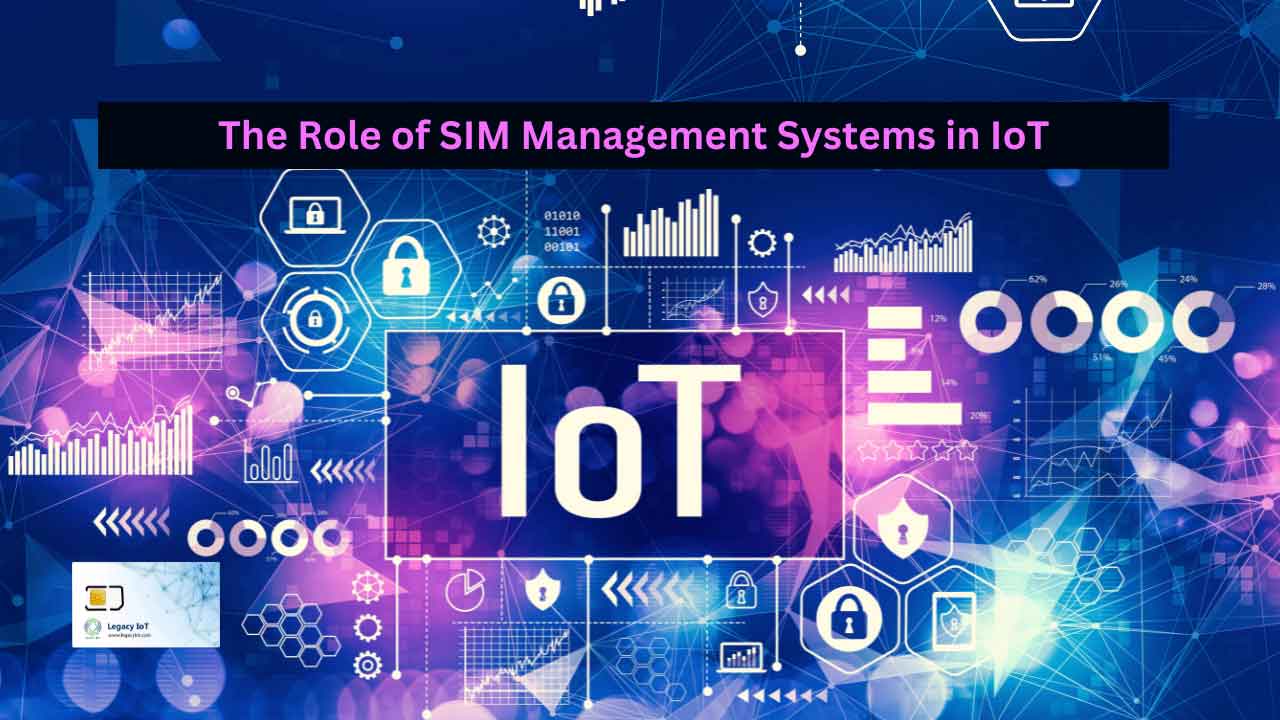Growing Need for SIM Management Systems
In the fast-evolving landscape of the Internet of Things (IoT), robust SIM management systems have become indispensable. As of 2021, there were approximately 1.9 billion cellular connections out of the 4 billion total IoT connections. This figure is rising quickly in tandem with the expansion of the eSIM market. By 2024, it is projected that there will be around 16 billion IoT-connected devices, and this figure is expected to reach 28 billion by 2030.
Managing these connections efficiently is crucial for businesses to fully harness the power of IoT. SIM management systems play a pivotal role by offering cost savings, enhancing security, and boosting overall efficiency.

These systems centralize control over all SIM cards, enabling meticulous monitoring and prompt issue resolution to ensure seamless connectivity and uninterrupted operations. The significance of these platforms cannot be overstated, as they are fundamental to maintaining the expansive network of devices integral to modern enterprise operations.
In this blog, we’ll delve into the vital role of SIM management systems in IoT, providing strategies to optimize connectivity and streamline operations.
What is a SIM Management System?
An advanced software program called a SIM (Subscriber Identity Module) management system is necessary in today’s Internet of Things (IoT) environment for remotely managing and controlling SIM cards over a network of cellular devices. It serves as the operational backbone of wireless device management, offering a centralized platform for provisioning, activating, deactivating, and configuring SIM cards, ensuring devices remain connected and operational without needing physical access.
A complete SIM management platform consists of a number of components, including databases for record-keeping, application programming interfaces (APIs) for system integration, user interfaces for maintaining SIM profiles, and security mechanisms to protect communications. It empowers businesses to efficiently handle vast numbers of SIMs, scaling from a few to millions as IoT networks grow. This system ensures the seamless operation of cellular-enabled IoT devices, used in applications ranging from industrial machine-to-machine communications to consumer electronics and enterprise data management.
How a SIM Management System Works
At its core, a SIM management system simplifies the complexity of managing multiple SIM cards through a central console that allows remote execution of various SIM-related tasks. A SIM profile customized to the device’s requirements, including data plans and network access rights, can be remotely assigned and activated by the system, for example, when a new IoT device is deployed. If a device becomes obsolete or is retired, the system can deactivate its SIM, cutting off network access to prevent unauthorized use or data charges.
The system maintains a real-time connection with every SIM card in the field, enabling continuous monitoring and management of each SIM’s status and usage through IoT Management Platform. It enables SIM profiles to be dynamically updated in response to shifting network circumstances or business demands. Examples of this include modifying data plans depending on consumption trends or moving network providers to get better rates or coverage.
Importance of SIM Management Systems in Modern Telecommunications
In the complex modern telecommunications landscape, a SIM management system is not just important—it’s indispensable. The amount of devices that depend on cellular connectivity is enormous due to the IoT market’s exponential growth. Managing these connections is about maintaining service and ensuring each connection is secure, efficient, and used optimally to deliver value to the business.
A SIM management system allows telecommunications operators to meticulously manage the lifecycle of M2M SIM cards, providing the agility to adapt to the ever-changing requirements of the IoT landscape. This system is crucial for maintaining the integrity and performance of the network and the devices that depend on it. It is also a critical component in monetizing IoT services, allowing operators to offer flexible and scalable solutions to their customers.
Conclusion
In the dynamic realm of IoT, effective SIM management systems are vital for leveraging cellular connectivity’s full potential. With a surge in IoT connections and a burgeoning eSIM market, businesses must prioritize efficient SIM management to optimize operations. These systems centralize control, enhance security, and ensure seamless connectivity, enabling businesses to scale effortlessly. By streamlining SIM provisioning, activation, and monitoring, these platforms support uninterrupted operations and cost savings. As the IoT landscape continues to expand, robust SIM management remains indispensable, driving efficiency and innovation in modern telecommunications.
Growing Need for SIM Management Systems
In the fast-evolving landscape of the Internet of Things (IoT), robust SIM management systems have become indispensable. As of 2021, there were approximately 1.9 billion cellular connections out of the 4 billion total IoT connections. This figure is rising quickly in tandem with the expansion of the eSIM market. By 2024, it is projected that there will be around 16 billion IoT-connected devices, and this figure is expected to reach 28 billion by 2030.
Managing these connections efficiently is crucial for businesses to fully harness the power of IoT. SIM management systems play a pivotal role by offering cost savings, enhancing security, and boosting overall efficiency.





